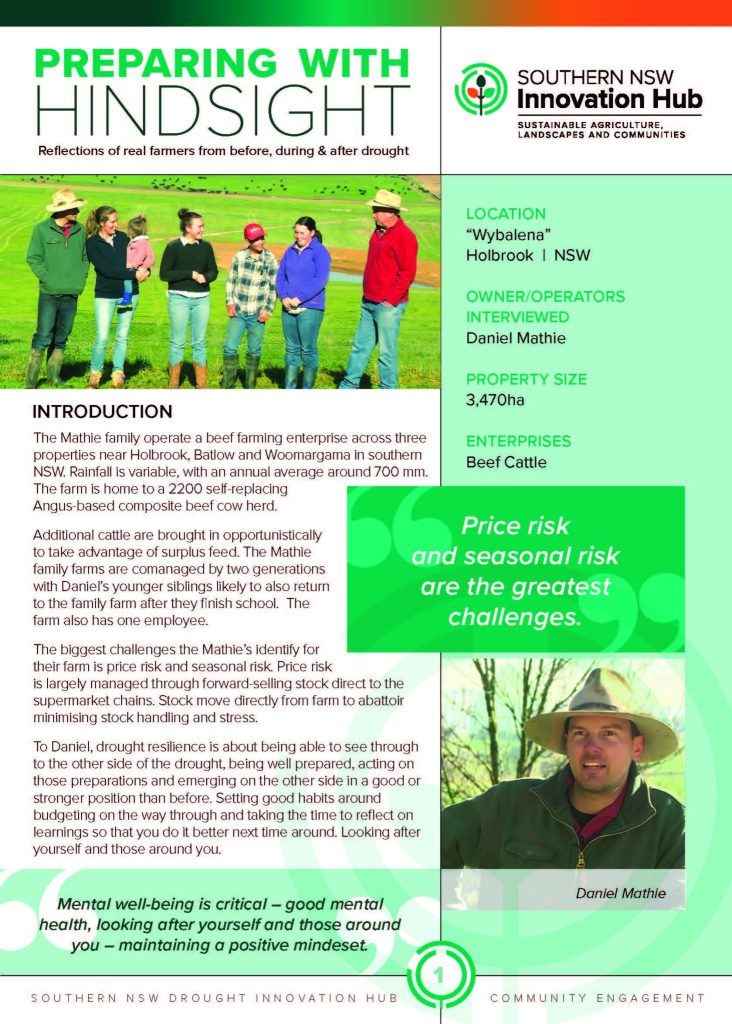Southern NSW Drought Resilience Adoption and Innovation Hub
Holbrook Landcare Network is proud to be one of nine regional partners of the Southern NSW Drought Resilience Adoption and Innovation Hub.
The Southern NSW Innovation Hub is one of eight hubs being established by the Department of Agriculture, Water and Environment across Australia to combat drought and form the epicentre of user-driven innovation, research and adoption and facilitate transformational change through the co-design of research, development, extension, adoption and commercialisation activities.
About the Hub
The northern boundary of the Southern NSW Innovation Hub is described by a line from Broken Hill to Cobar, which joins the Macquarie catchment northern boundary near Quambone. It includes most of the Macquarie River catchment, specifically the higher elevation areas in the upper reaches and Macquarie River-dependent irrigation areas, and lower reaches of the Darling River.
The Hub boundary follows the western and southern edges of the Hunter catchment and joins the northern edges of the Sydney Catchment near Kandos and meets the coast near the mouth of the Hawkesbury River. The Hub’s southern and western boundaries are the VIC and SA state borders.

Community Input
The strategic direction of the Southern NSW Drought Resilience Adoption and Innovation Hub, including its priorities, programs and initiatives are user-led. As a partner of the Southern NSW Drought Resilience Adoption and Innovation Hub, Holbrook Landcare will play a crucial role in connecting and facilitating discussions with regional communities across Southern NSW. We are interested in insights from landholders and regional communities that articulate their issues of concern and priorities in regard to drought resilience.
Southern NSW Innovation Hub - Case Study:
PREPARING WITH HINDSIGHT
Reflections of real farmers from before, during & after drought
The Mathie family operate a beef farming enterprise across three properties near Holbrook, Batlow and Woomargama in southern NSW. Rainfall is variable, with an annual average around 700 mm. The farm is home to a 2200 self-replacing Angus-based composite beef cow herd.
Additional cattle are brought in opportunistically to take advantage of surplus feed. The Mathie family farms are comanaged by two generations with Daniel’s younger siblings likely to also return to the family farm after they finish school. The farm also has one employee.
The biggest challenges the Mathies identify for their farm are price risk and seasonal risk. Price risk is largely managed through forward-selling stock direct to the supermarket chains. Stock move directly from farm to abattoir, minimising stock handling and stress.
To Daniel, drought resilience is about being able to see through to the other side of the drought, being well prepared, acting on those preparations and emerging on the other side in a good or stronger position than before. Setting good habits around budgeting on the way through and taking the time to reflect on learnings so that you do it better next time around. Looking after yourself and those around you.
Funding Acknowledgment


